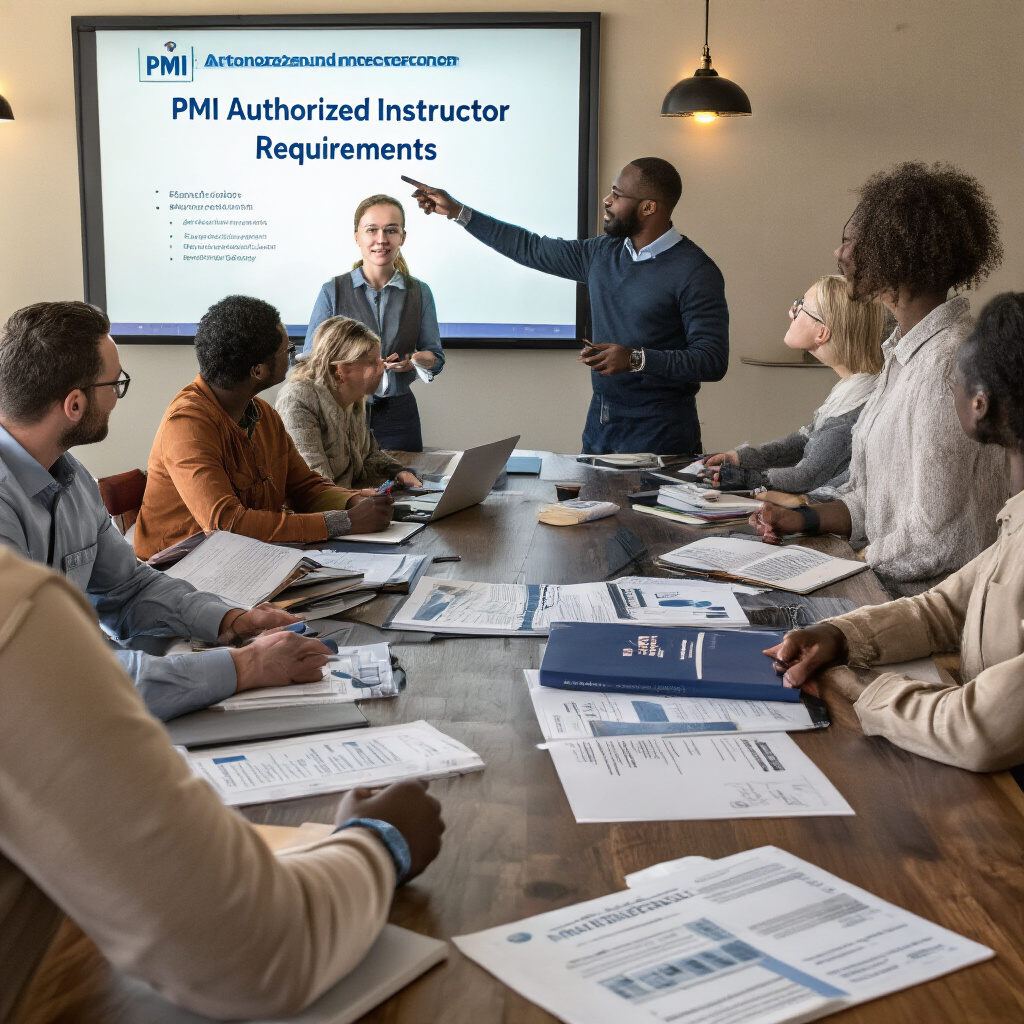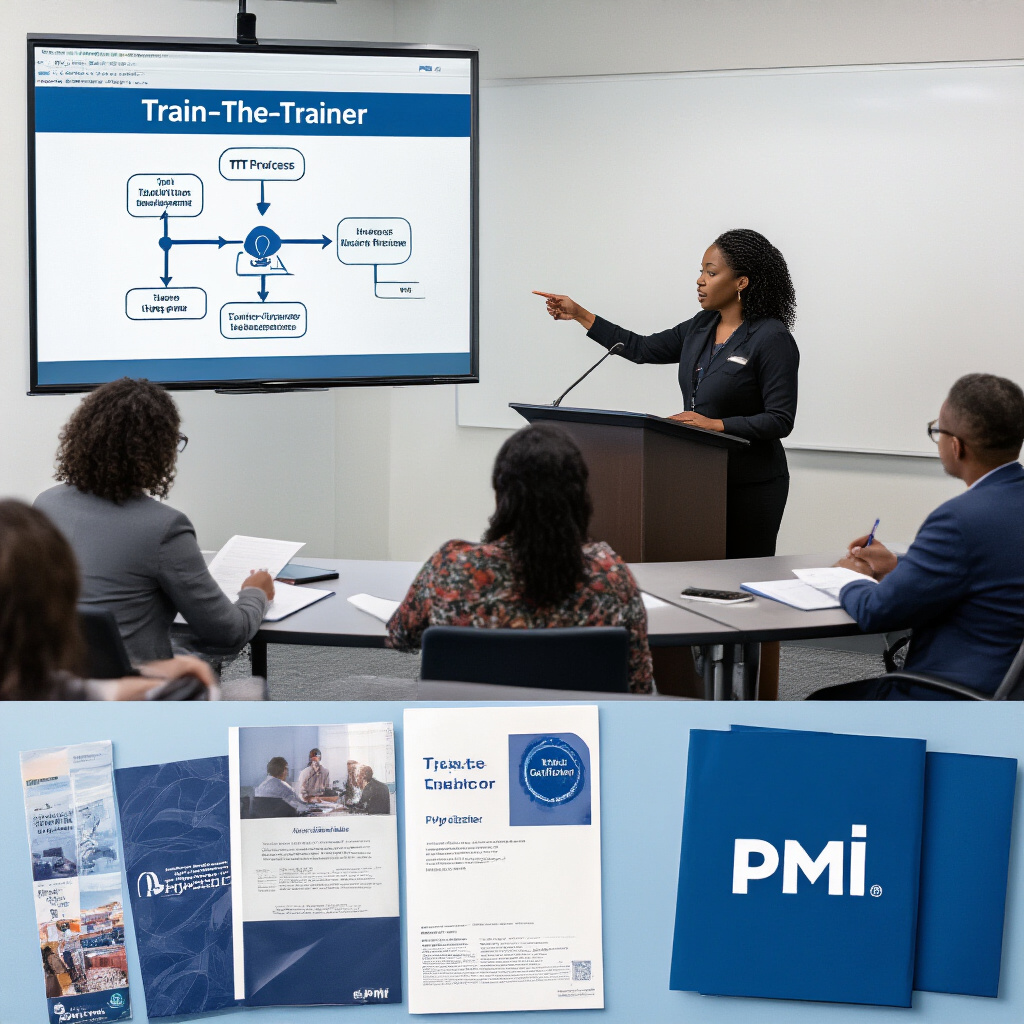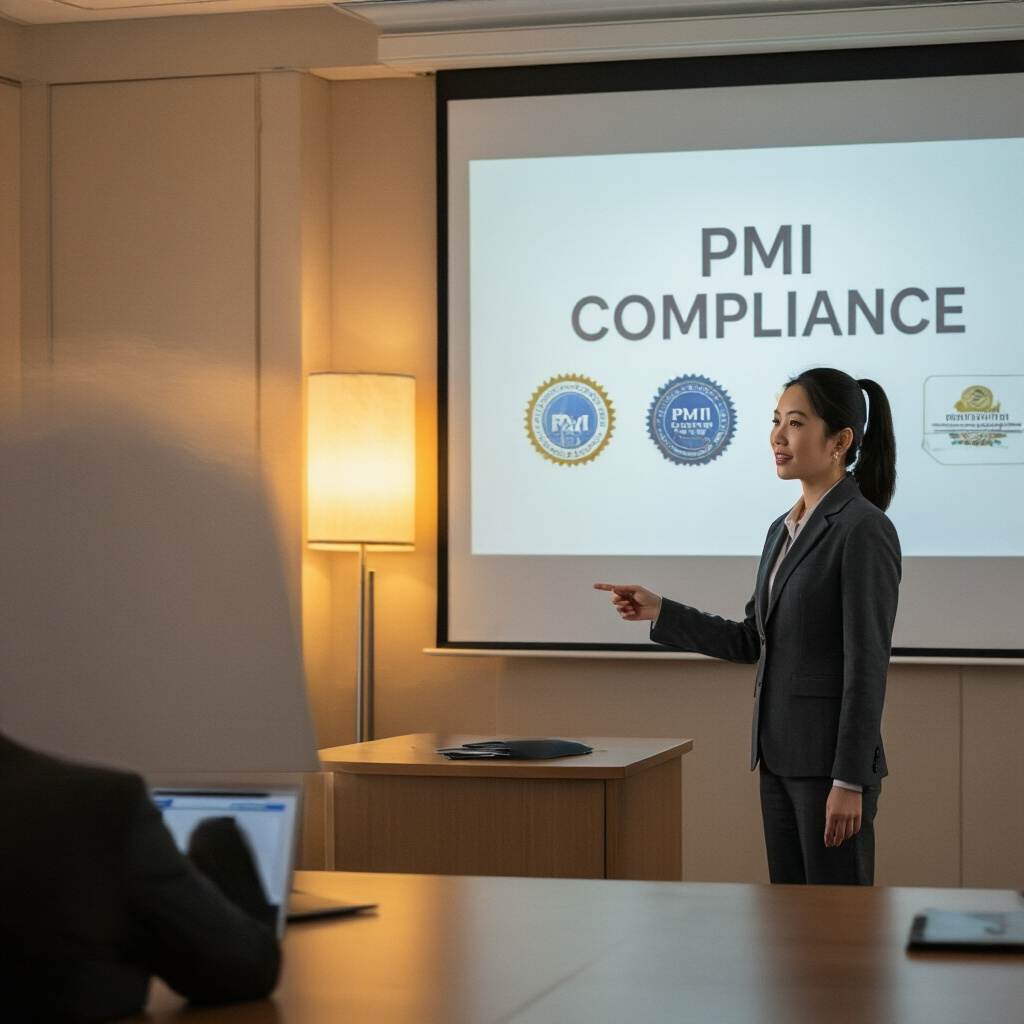Uncategorized
TTT – PMI Athorised instructor – Compliance Guide
Ever felt that crushing “am I doing this right?” anxiety when trying to navigate PMI compliance? You’re not alone. Thousands of training instructors find themselves second-guessing every decision, terrified of losing their authorization over some obscure rule they missed.
Let’s clear something up right now: understanding PMI Authorized Training Partner compliance doesn’t have to feel like decoding ancient hieroglyphics.
What if you had a straightforward guide that transformed those confusing compliance requirements into plain English? One place that explained exactly what PMI expects from authorized instructors without the bureaucratic double-speak?
That’s exactly what we’ve created. And trust me, once you see how simple compliance can actually be, you’ll wonder why you spent so many nights losing sleep over it.
But here’s what most instructors never realize about compliance until it’s too late…
Understanding PMI Authorized Instructor Requirements

Key Qualifications for Becoming an Authorized Instructor
Want to join the elite group of PMI Authorized Instructors? You’ll need more than just a certificate hanging on your wall.
First off, you need to hold at least one active PMI certification related to what you’ll teach. PMP® holders who’ve actually managed projects in the real world are what PMI looks for. They want people who’ve been in the trenches, not just studied the theory.
You also need solid teaching experience—minimum 3 years of adult education. Those college internships where you taught freshmen won’t cut it. PMI wants proof you can handle a room full of professionals.
And don’t forget about the technical know-how. You’ll need to demonstrate mastery of PMI’s content and frameworks. This isn’t something you can cram for overnight.
Core Competencies Required by PMI
PMI doesn’t just want knowledgeable instructors—they want engaging ones. Their competency framework breaks down what makes a great instructor:
- Content Expertise: You need to know the material inside-out
- Delivery Excellence: Can you explain complex concepts simply?
- Student Engagement: Keeping professionals interested is harder than you think
- Assessment Abilities: Measuring student progress accurately matters
The secret sauce? Adaptability. Every class is different, and the best instructors can pivot when they see confused faces staring back at them.
Certification Maintenance Requirements
Got your authorized instructor status? Great! Now the real work begins.
PMI requires instructors to maintain their credentials through:
- Annual renewal of your underlying PMI certification
- Completing at least 25 hours of teaching PMI-approved courses yearly
- Participating in PMI’s quality assurance assessments
- Maintaining a student satisfaction score above 4.0 on a 5-point scale
Miss any of these targets, and you could find yourself on probation or even losing your authorized status altogether.
Professional Development Expectations
The learning never stops—especially for instructors. PMI expects you to:
- Earn 60 PDUs every three years (same as other certification holders)
- Complete at least 8 hours annually of instructor-specific training
- Stay current on all PMI standard updates and framework changes
- Participate in the PMI Authorized Instructor Community
Smart instructors don’t treat these as checkboxes. The best ones go beyond requirements, constantly refreshing their knowledge and teaching techniques. Because in this field, the moment you stop learning is the moment you stop being an effective teacher.
Navigating the Train-the-Trainer (TTT) Process

Application Procedures and Timeline
Getting PMI’s stamp of approval as an instructor isn’t like ordering fast food. It takes time—usually 45-60 days from start to finish. But hey, good things come to those who wait, right?
First, you’ll need to create an account on PMI’s online portal. Don’t put this off till the last minute! Their system occasionally throws tantrums.
The process looks something like this:
- Submit your initial application
- Pay the review fee ($500-$700 depending on your PMI membership status)
- Wait for application screening (about 10 business days)
- Complete the skills assessment
- Receive your final decision
Required Documentation
You’ll need to gather more paperwork than when you bought your first house. Here’s your checklist:
- Current PMI certification in good standing
- Proof of 3+ years teaching experience
- 1,500+ hours of instruction time (documented)
- At least 5 student evaluations with positive feedback
- Your detailed résumé highlighting relevant experience
- Sample teaching materials you’ve created
- Two professional references who can vouch for your teaching skills
Missing even one of these? Your application hits a brick wall faster than you can say “professional development.”
Assessment Criteria
PMI isn’t just looking for people who know their stuff. They want instructors who can actually teach.
They’ll evaluate you on:
| Area | What They’re Looking For |
|---|---|
| Content Knowledge | Can you explain complex concepts simply? |
| Presentation Skills | Do you put people to sleep or keep them engaged? |
| Classroom Management | Can you handle that one person who challenges everything? |
| Assessment Abilities | Can you accurately evaluate student progress? |
| Technology Proficiency | Can you handle virtual teaching environments? |
Common Challenges and Solutions
The biggest roadblock? Documentation. Most applicants fail because they can’t prove their teaching hours.
Solution: Start tracking everything now. Create a spreadsheet with dates, topics, hours, and audience details.
Another stumbling block is the skills assessment. Many applicants bomb it because they prepare for content knowledge rather than teaching ability.
Solution: Record yourself teaching and watch it back. Brutal? Yes. Effective? Absolutely.
Renewal Processes
Once you’re in, you’re not in forever. You’ll need to renew every three years.
The renewal requires:
- 25+ hours of documented instruction annually
- Maintaining your PMI certification
- Completing 15 PDUs specifically in teaching methodology
- Submitting updated teaching materials
- Paying the renewal fee ($300-$450)
Miss the renewal deadline and you’re starting from square one. And nobody wants that nightmare.
Compliance Standards for PMI Course Delivery

A. Official Curriculum Guidelines
Following PMI’s curriculum is non-negotiable. When you’re teaching as an authorized instructor, you can’t just wing it or create your own materials.
Every PMI course comes with a detailed instructor guide mapping out exactly what you need to cover. Stick to it. These guides aren’t suggestions – they’re requirements designed to ensure students get consistent, quality education regardless of who’s teaching.
You’ll need to:
- Cover ALL learning objectives (no skipping the “boring parts”)
- Follow the recommended time allocations
- Use the official slide decks without major modifications
- Include all prescribed activities and exercises
The guidelines exist because PMI needs to maintain its reputation. When learners take your course, they’re trusting that they’re getting legitimate PMI-approved content.
B. Course Material Usage Regulations
Got your hands on those slick PMI materials? Great. Now don’t mess them up.
PMI course materials are protected by copyright, and there are strict rules about how you can use them:
- No photocopying or distributing materials beyond enrolled students
- No posting materials publicly online
- No rebranding or removing PMI attributions
- No selling or transferring materials to unauthorized parties
You’ll typically receive digital access to instructor materials through PMI’s authorized portals. Student materials must be purchased legitimately for each participant – no sharing or reusing materials between cohorts.
C. PMI Branding Requirements
The PMI logo isn’t just some pretty graphic you can slap anywhere. It’s a protected brand element with specific usage guidelines.
When promoting your courses:
- Use only approved PMI logos in the correct format and colors
- Don’t alter, stretch, or recolor the PMI logo
- Include required disclaimers about your relationship with PMI
- Make clear distinctions between PMI’s content and any supplementary materials you provide
Your marketing materials need to accurately represent your relationship with PMI. You’re an authorized instructor, not PMI staff. Getting this wrong can mislead students and potentially violate your agreement.
D. Student Evaluation Standards
PMI doesn’t just care about what you teach – they care about how you assess learning.
For certification prep courses, you must:
- Administer practice exams that mirror the actual certification test format
- Provide honest feedback on student readiness
- Follow standardized grading criteria for any assessments
- Document student progress using PMI-approved methods
Assessment integrity is crucial. Don’t pass students who aren’t ready just to boost your success metrics. PMI regularly audits instructor evaluations, and artificially inflated pass rates will eventually catch up with you.
Remember that your reputation as an instructor is directly tied to your students’ actual preparedness, not just their happiness with your course.
Building a Successful PMI Instruction Practice

Marketing Within PMI Guidelines
Want to grow your PMI instruction business without getting into hot water? You need to play by PMI’s marketing rules.
First off, don’t even think about using PMI’s logos without permission. That’s a fast track to trouble. Instead, use your ATP (Authorized Training Partner) designation correctly. You can say “PMI Authorized Training Partner” but not “PMI Endorsed” or “PMI Approved.”
When promoting your courses, be crystal clear about what students are getting. No false promises about guaranteed pass rates or misleading claims. Just honest, straightforward descriptions of your offerings.
Social media is your friend, but keep it professional. Share success stories (with permission), post exam prep tips, and highlight the value of PMI certifications without crossing compliance lines.
Documentation and Record-Keeping Best Practices
The paperwork isn’t sexy, but it keeps you in business. Start by creating a bulletproof system for tracking student attendance, course completions, and evaluations.
Digital is your best bet here – use a secure, backed-up system that lets you pull records in seconds when PMI comes knocking for an audit.
Keep everything organized by:
- Course date
- Course name
- Instructor details
- Student information
- Evaluations
- PDU issuance
Don’t forget to maintain instructor qualification records too. Your instructors’ credentials need to be up-to-date and verified.
Student Engagement Strategies
Boring classes create forgettable experiences. And forgettable doesn’t cut it when you’re building a reputation.
Mix up your teaching methods:
- Break complex concepts into bite-sized chunks
- Use real-world scenarios and case studies
- Create interactive group activities that apply the knowledge
- Incorporate current events relevant to project management
- Implement gamification to make learning stick
The most successful PMI instructors know their material cold but deliver it warm. They connect theory to actual workplace challenges and create “aha” moments.
Continuous Improvement Approaches
Standing still is moving backward in the PMI instruction world. Smart instructors constantly refine their approach.
After every class, analyze what worked and what bombed. Don’t just collect feedback forms – actually read them and make changes based on patterns you spot.
Stay current with PMI updates (they happen more often than you think). Set calendar reminders to review the latest exam content outlines and adjust your materials accordingly.
Form relationships with other ATP instructors and compare notes. Sometimes the best improvements come from outside your own four walls.
Finally, be your own harshest critic. Record yourself teaching occasionally and watch it back. Painful? Maybe. Effective? Absolutely.

Staying Compliant as a PMI Authorized Instructor
Meeting PMI’s stringent requirements for authorized instructors demands ongoing dedication to professional development, adherence to Train-the-Trainer protocols, and consistent delivery of high-quality course content. By maintaining compliance with PMI standards, you not only preserve your instructor status but also enhance your credibility in the project management education space.
Your success as a PMI instructor ultimately depends on building a sustainable practice through continuous learning, networking with fellow professionals, and adapting your teaching methods to meet diverse learner needs. Remember that your role extends beyond simply delivering content—you’re shaping the next generation of project management professionals and contributing to the advancement of the field. Commit to excellence in your instruction practice, and you’ll create value for both your students and the broader project management community.

